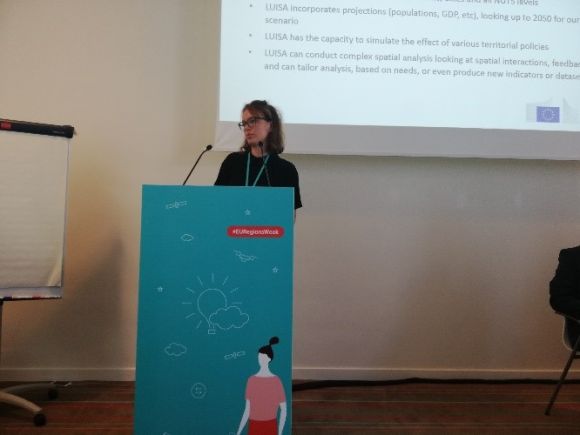
Most regional and local represeters who were attending the “Cities and Regions Role in European Making Policiy” conference today thought that citizens and regional authorities’ knowledge about the impact of EU policies in their territory is highly poor. That’s why iniciatives like LUISA exist.
This morning the dutch researcher Sjoerdje Van-Heerden, in the context of the EU Regions and Cities Week, has presented the project LUISA for territorial impact assessment and policy evaluation. The project makes projections of the impact that EU policies may have in a specific area.
The project stands for three basic pilars: land use, accesibility and population. LUISA uses oficial data sources provided by the EU and other authorities to measerure several issues such as urban and rural development, spacial, demographic and economic factors or accesibility to services.
LUISA is primarily used for the ex-ante evaluation of European Commision policies that have a direct or indirect territorial impact. It is based on the concept of land function for cross-sector integration and for the representation of complex system dynamics. Beyond a traditional land use model, LUISA adopts a new approach towards activity-based modelling sustained upon the endogenous dynamic allocation of population, services and activities.
LUISA’s references are baseline scenarios assuming official socio-economic trends from ECFIN and EUROSTAT, business as usual processes, and the effect of established European policies with direct or indirect territorial impacts. Variations to that reference scenario may be used to estimate impacts of specific policies, or of alternative macro-assumptions. LUISA is compliant with the European Commision hypothesis on the demographic and economic growth at country level. It also assumes existing EU policies with direct or indirect territorial impact such as the Cohesión policy or the Biodiversity strategy. The project is updated every 1-2 years with revised scenario assumptions and model improvements.
This initiative can provide data at any level of resolution. It can produce data for regions, cities and all NUTS levels. Accessibility, activity changes and population distribution are essential aspects of the baseline scenario which help LUISA to incorporate projections looking up to 2050.
LUISA is based upon the notion of land function. LUISA aims to contribute to the understanding, modelling and assessment of the impacts of land functions dynamics as they interact from local to global scales in the context of multiple and changing drivers. A land function can, for example, be societal, economic or environmental. Land functions are temporally and spatially dynamic, and are constrained and driven by natural, socio-economic, and techno-economic processes.
LUISA has two territorial development units which work like territorial reference scenario. The biggest one is in Seville (Spain) and has 70 people working on it, the other is based in Ispra (Italy) and gathers 20 researchers.
Besides LUISA, the iniciative TIA was also presented. The Project cooperates with the Comitee of Regions and it is financed wth European Development Founds.
Written by: David Sánchez (Spain)
Edited by: Iskra Tsankova (Bulgaria)



